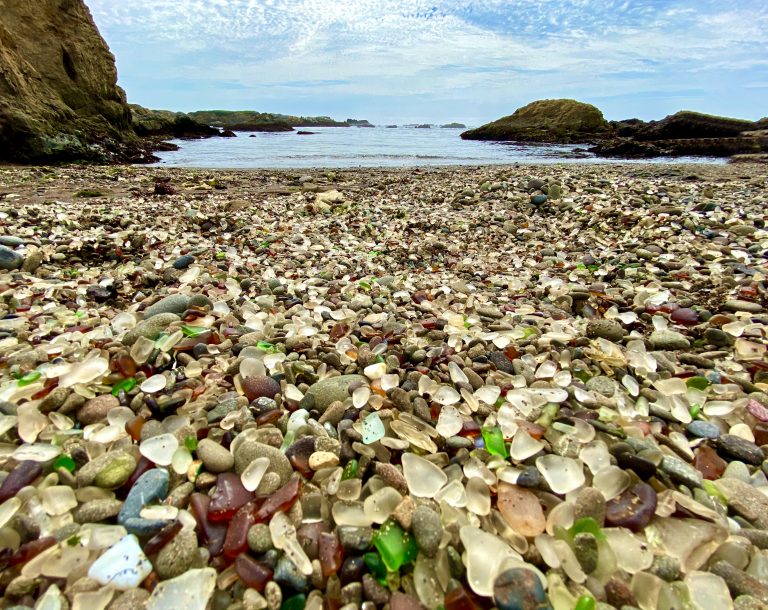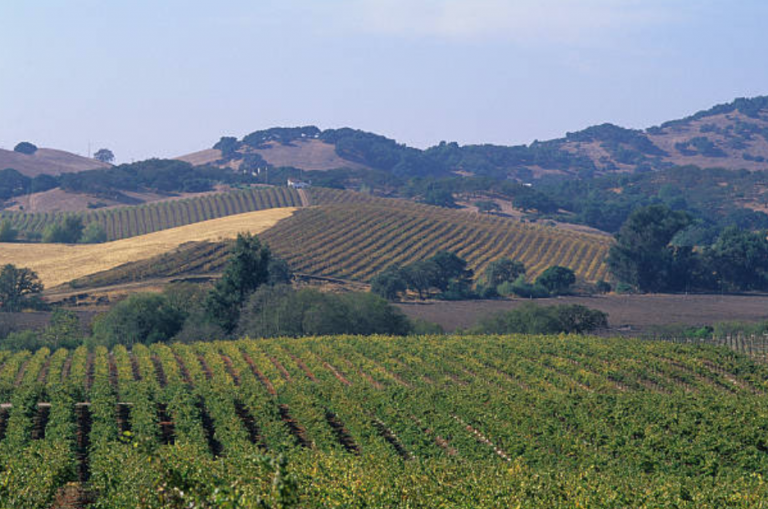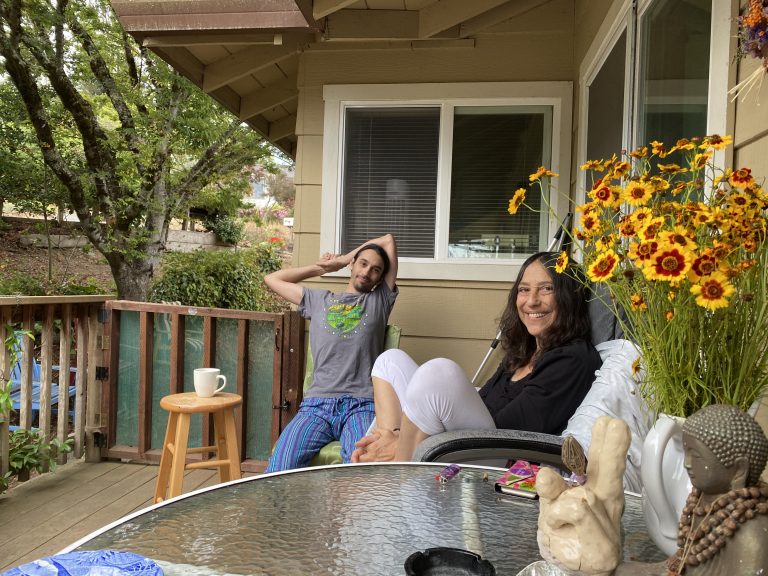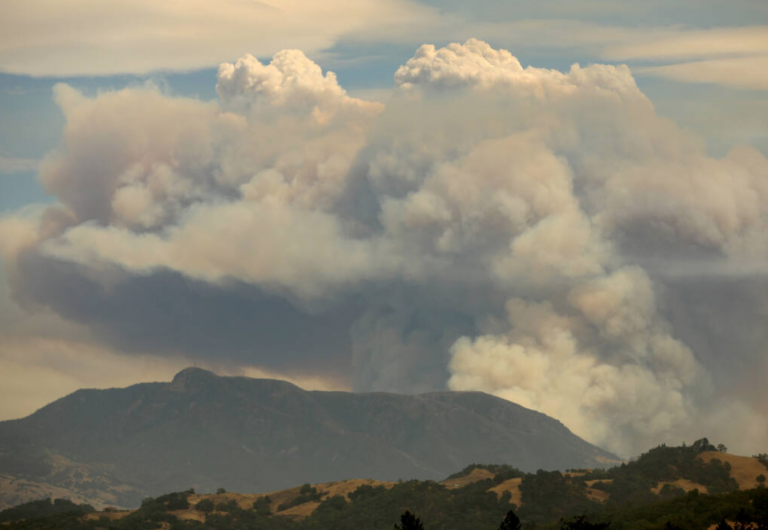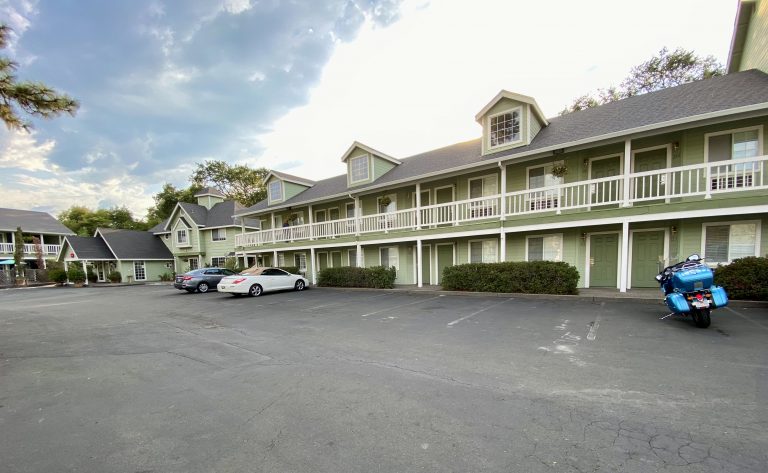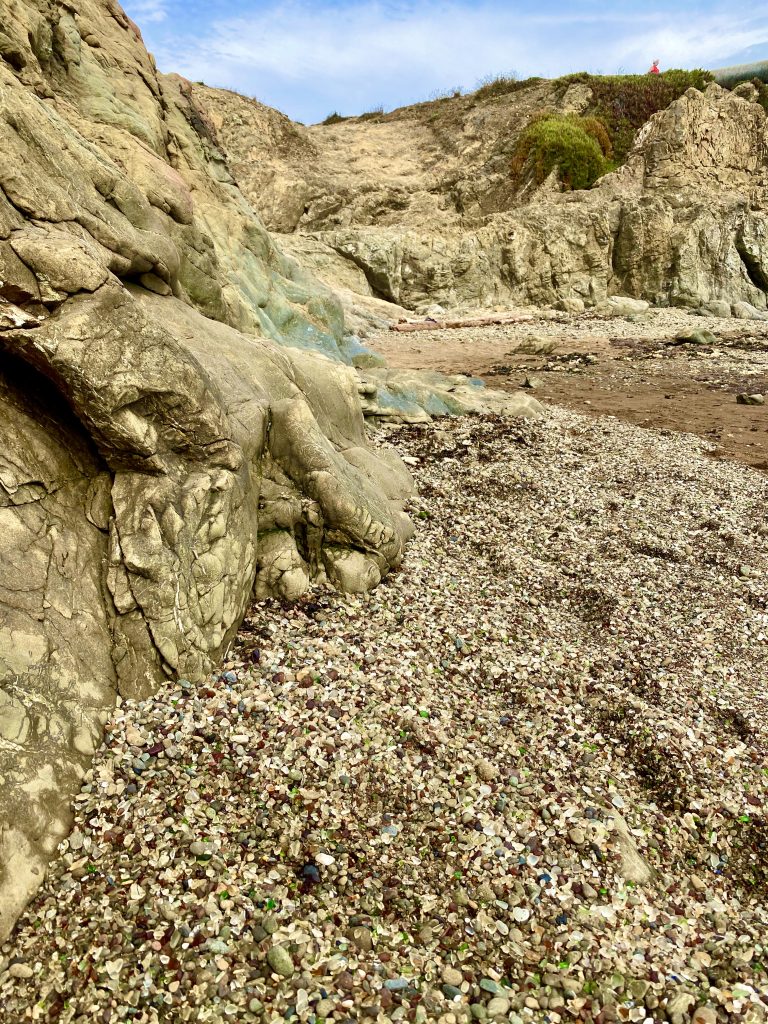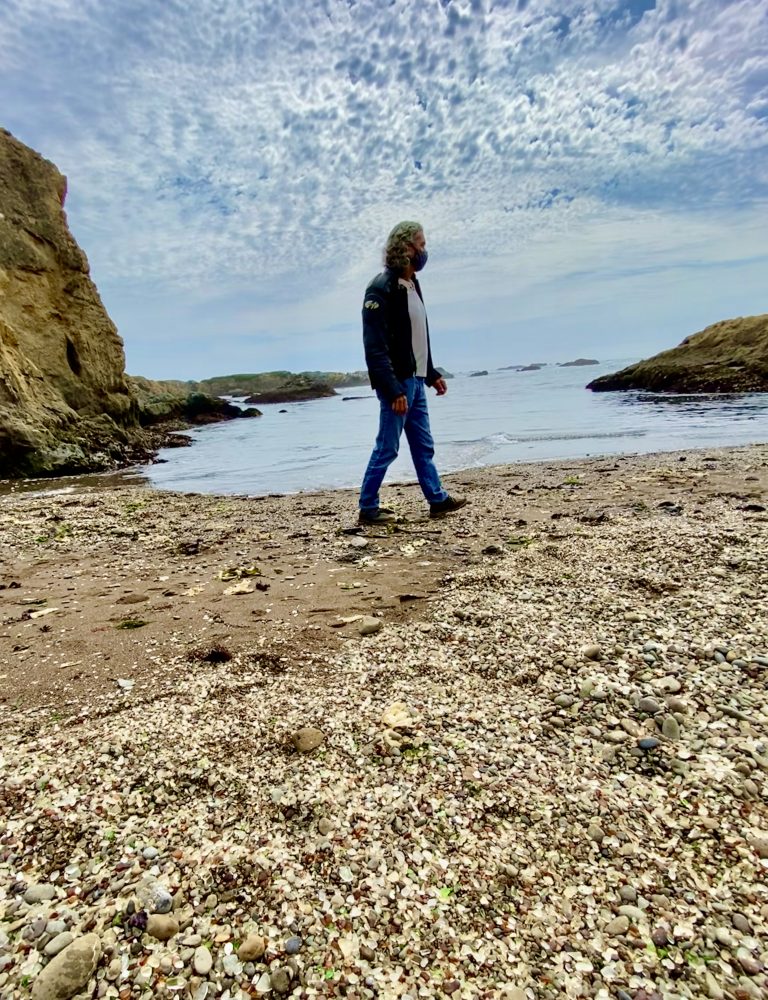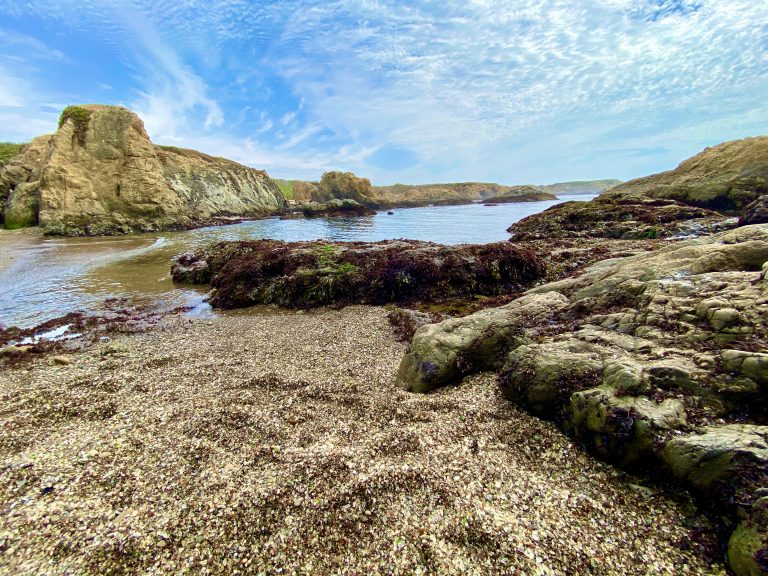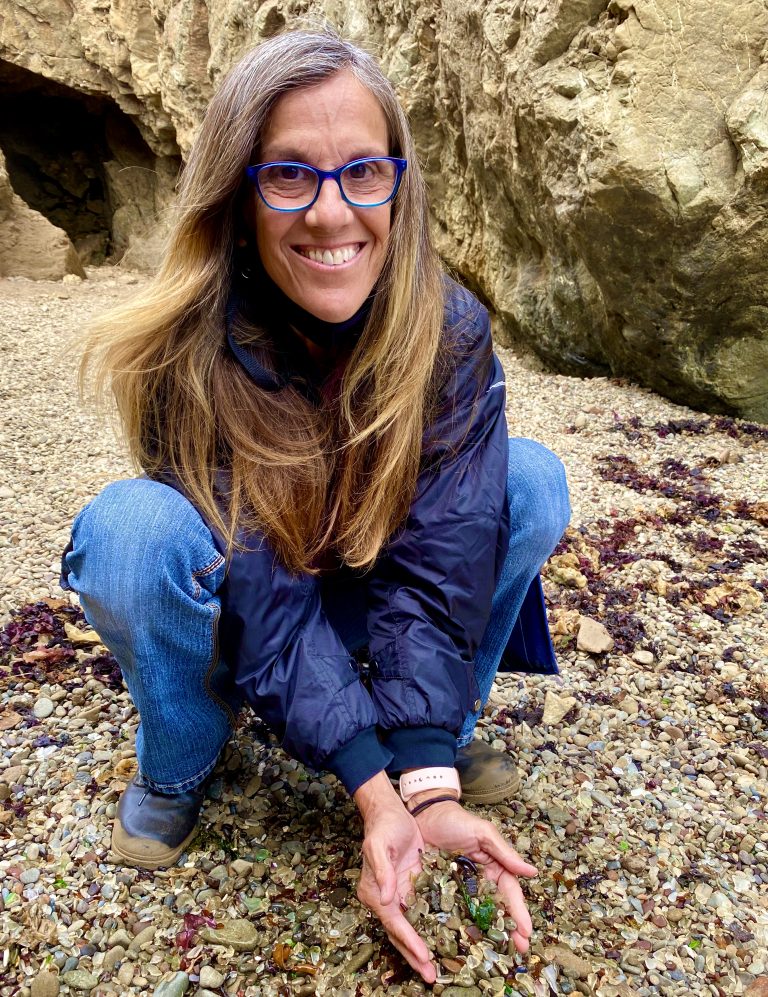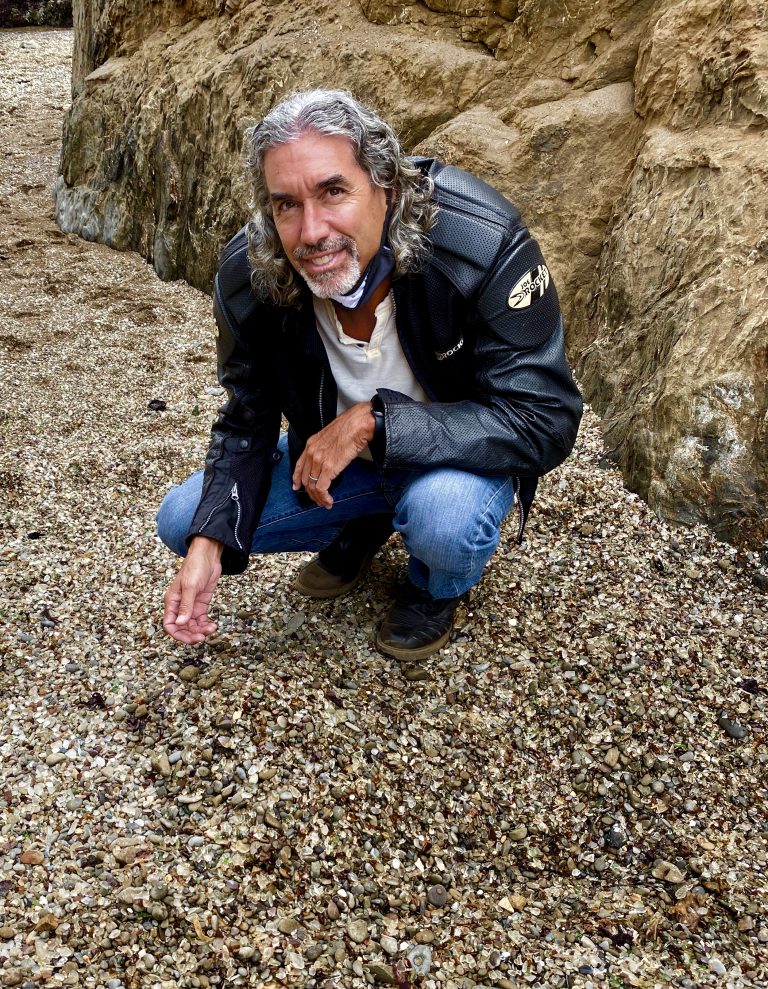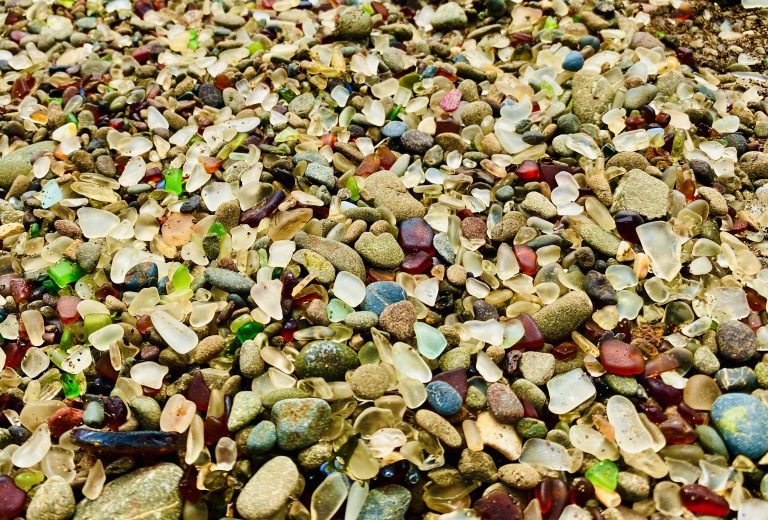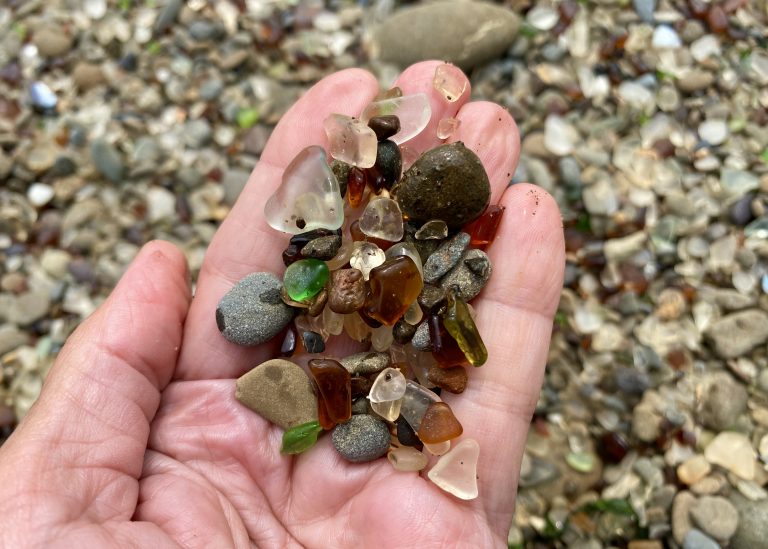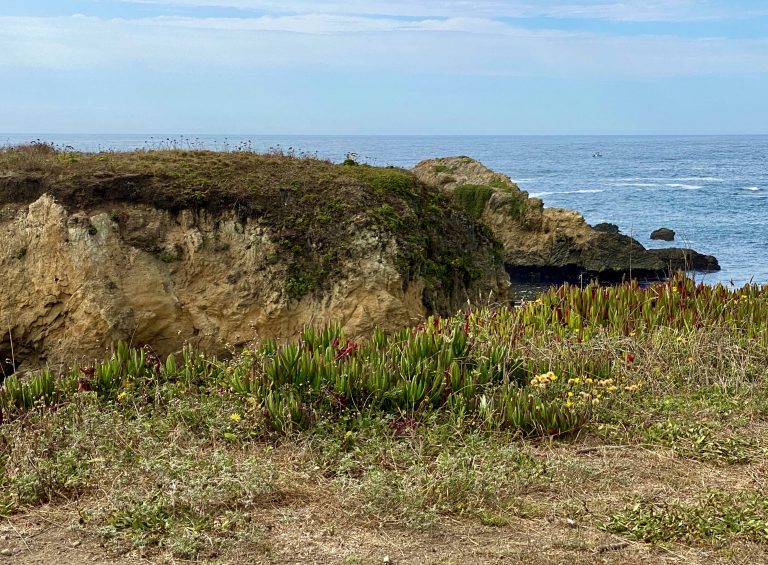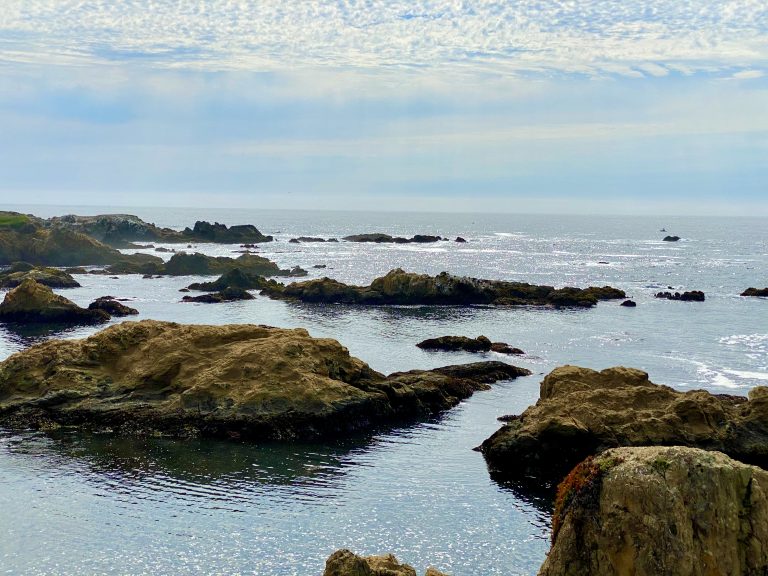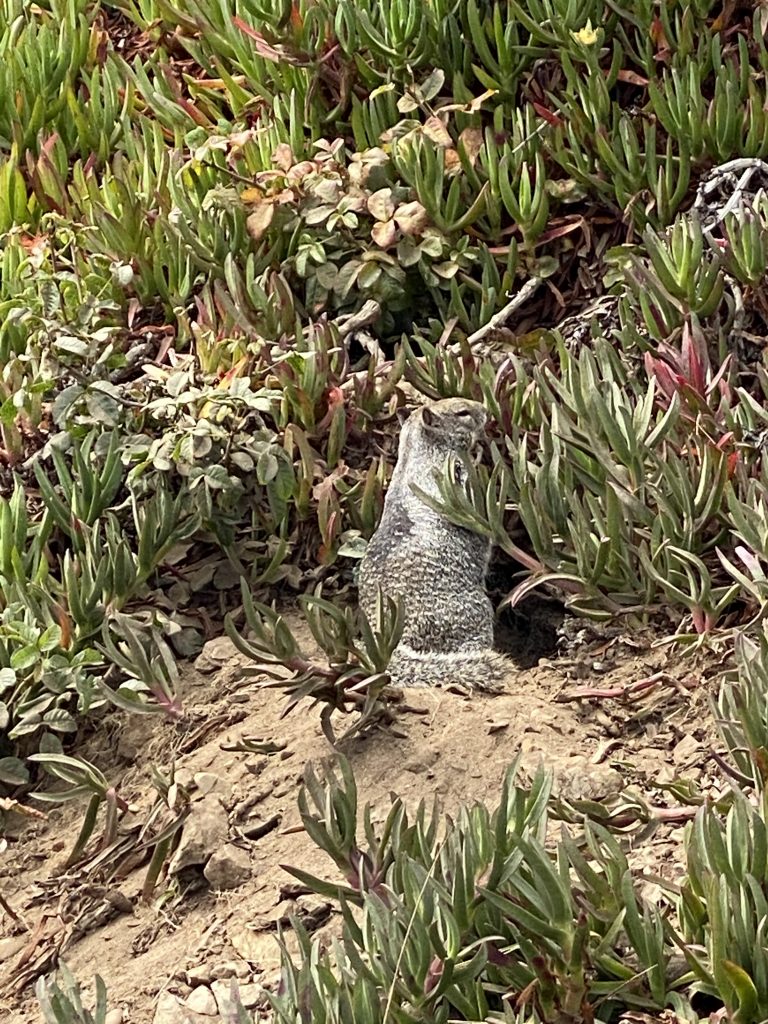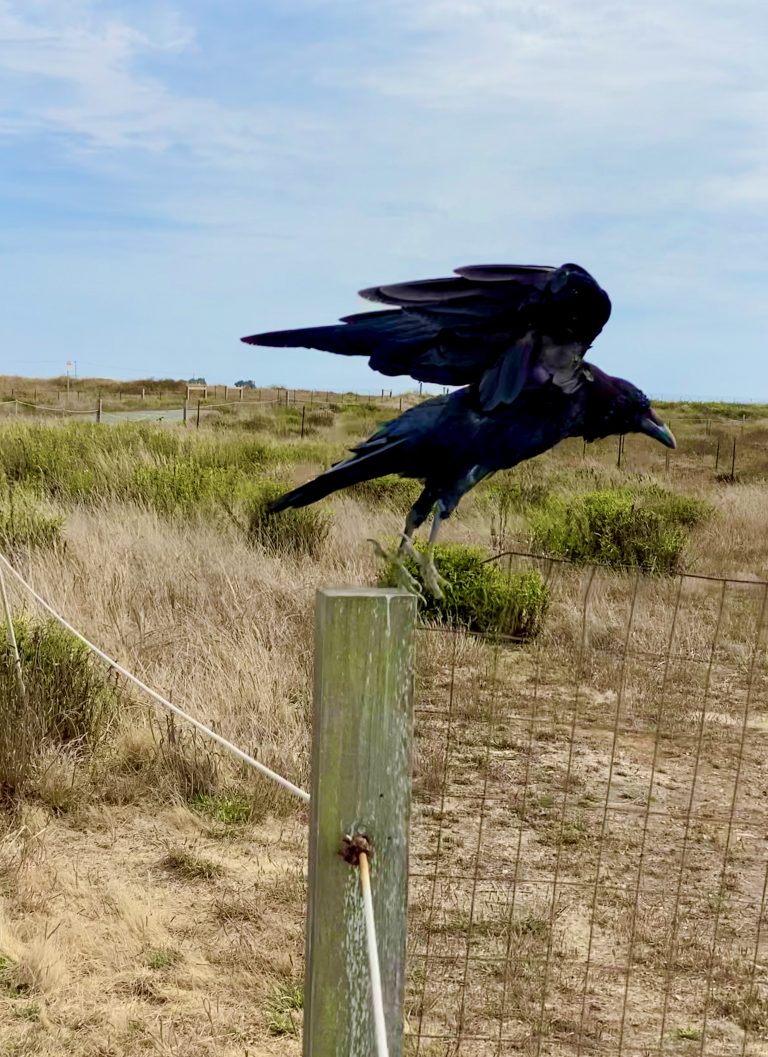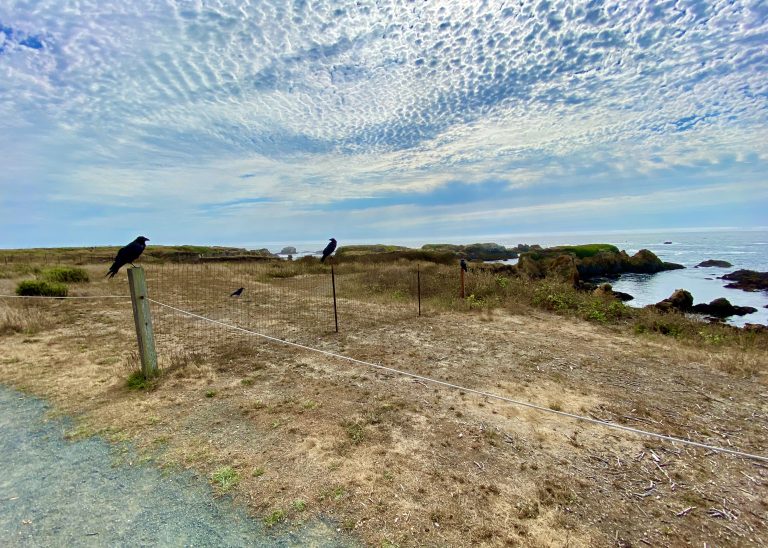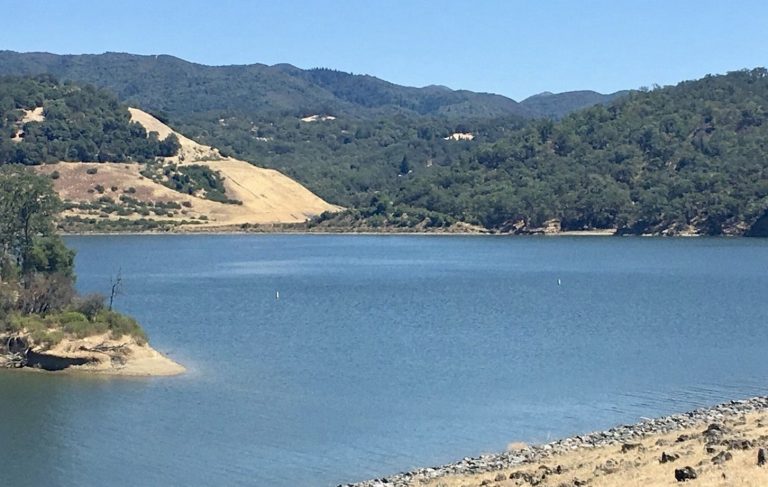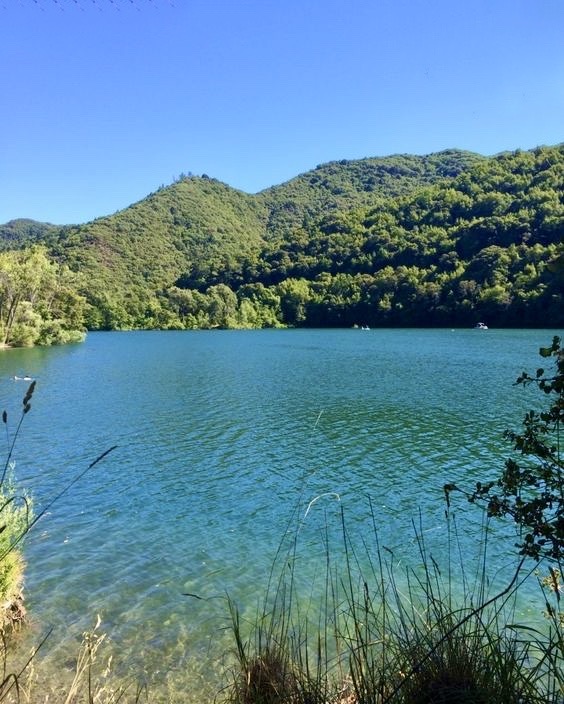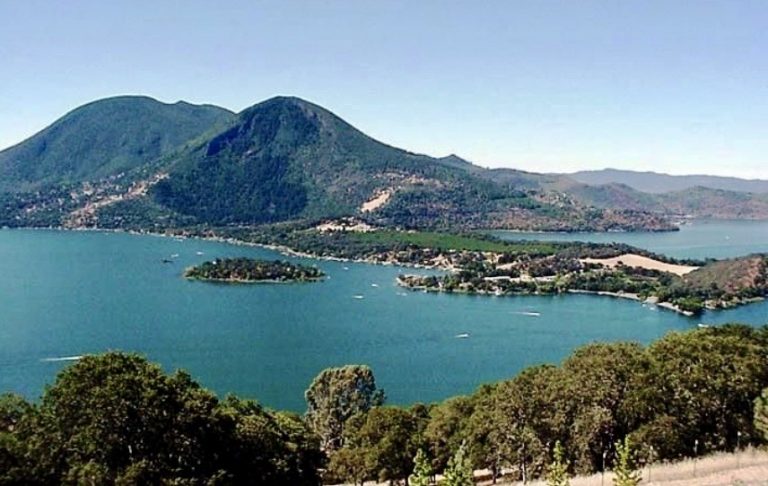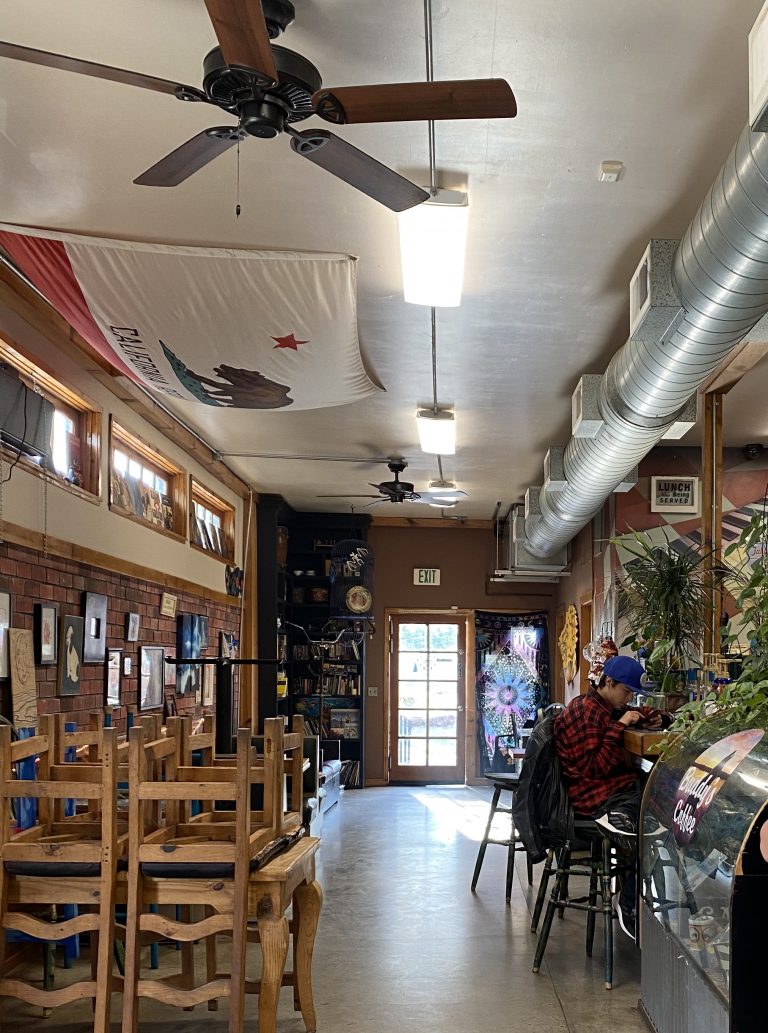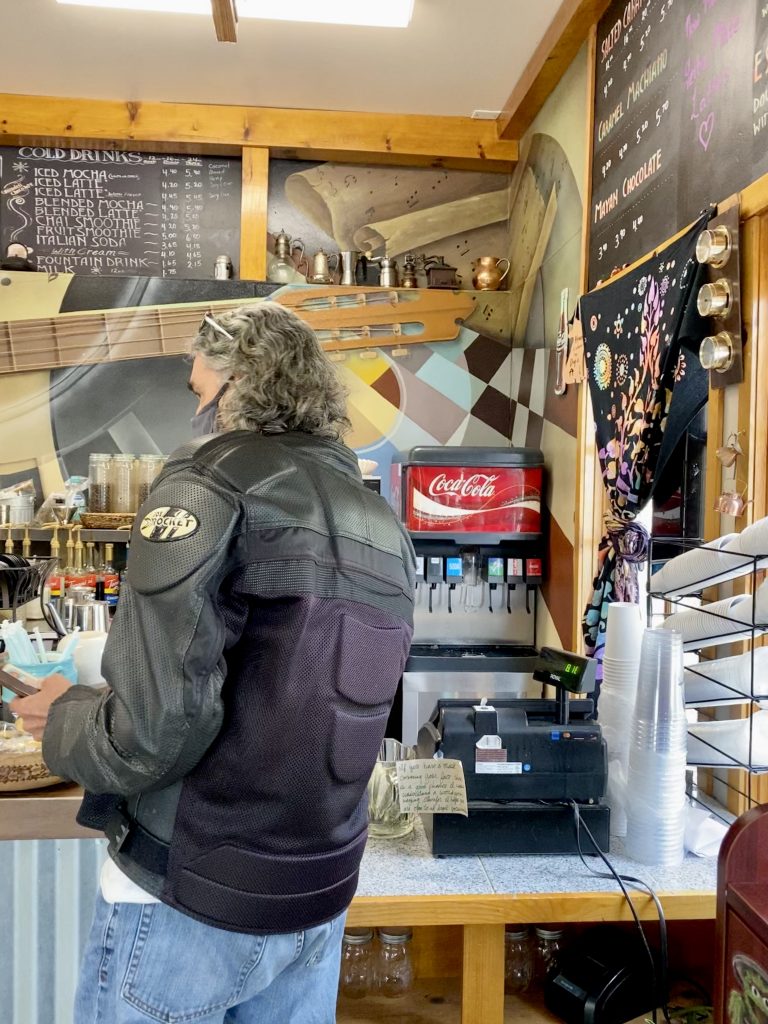August 17-18, 2020
A cool comfy sleep is just the thing after a motorcycle trip from (or to) hell. Yesterday’s asphalt-melting ride to Napa was quickly forgotten as we readied ourselves for an hour-long ride to Susan’s sister’s house in Sebastopol. The forecast was great aside from a tiny chance of rain on the way. I’ll be the first to admit I don’t like motorcycle riding in the rain, or even on a wet road. Motorcycle tires have two tiny contact patches with the road versus four much larger ones on a car. If one contact patch on a bike slips, the bike can easily go down, hence my dread of wet roads—particularly those that haven’t been wet for months and have a greasy coating of oil from leaky vehicles (like Harleys, snicker). So, I was glad we wouldn’t have to risk a ride in the rain.
But there are many twists and turns, often at less than 30 mph. Worse, there are idiot zombies driving cars on the road that expect all traffic to at least double the speed limit or endure their wrath—and tailgating. Tailgating a motorcycle is much worse than tailgating a car because there is a lot less room for error for driver and rider. Plus it’s hard to concentrate on a twisty road when some a-hole is filling up your mirrors with caffeine-induced rage. I mention this because if you tailgate a motorcycle, be prepared for all manner of unpleasant hand signals from them.
Note: Do not try to pull over a biker and engage because A) They are bikers and are way tougher than you are, and B) they have helmets, big boots, and padded clothing and if they’re capable of surviving a spill at 50 mph, they won’t worry about taking on you. That’s a roundabout way of saying that the road was great, but the company around us, not so much. The big BMW was a handful on the corners with a passenger, but we made it through without running or being run off the road.
As we were pulling into Susan’s sister’s neighborhood, un-forecast thunder rumbled. Again. In fact, as we sat on the socially distant deck to visit, raindrops pattered on the bike parked out front. Wet roads . . . We had a wonderful, overdue visit and enjoyed homemade zucchini bread and coffee. But as we chatted, I kept looking at the weather radar on my phone, seeing big developing storms closing in.
After our brief visit, we mounted up and abruptly decided to change our route to avoid the storms. Instead of heading to the coast and taking Hwy 1, we took the parallel inland Hwy 101. Ominous clouds—the ugly kind that can spawn tornados—swirled behind us and 40-mph cold gusts pushed us around on the highway as the clouds built. We were running at an angle to the storms and hoping we could outrun them, and they were hoping to blow us off the road. A few times raindrops pelted us briefly and Hwy 101 became wet, as more storms formed around us. At one point I turned off the road and ducked into a gas station seeing heavy rain ahead, only to watch it dissipate. We kept going and our gear kept us dry until finally only high clouds remained in front of us as we continued our journey north to our waiting inn in Willits.
We’ve both taken the coastal highway numerous times but somehow neither of us had previously driven on the 101 in this part of California. We were taken aback by the beauty. Sadly, one day later both sides of the 101 would be shut down at times due to the extensive fires caused by the lightening storms we’d left in our rear view mirror.
We arrived in Willits a bit exhausted from being chased, but happy to again be able to thumb our noses at the weather gods in the security of our comfortable room at the inn.
Contact-less early check-in accomplished, we took a short walk and found some snacks, then regrouped and planned for our ultimate goal, Glass Beach in Fort Bragg. It was still plenty early and the storms were gone so we saddled up again for the hour-long 30-mile ride.
It was a steep and particularly twisty road, with some wet portions, the kind I despise. But, it was really a beautiful ride from dry Willits to the damp coast, twisting and turning through pines and redwoods. But the drivers once again showed their stupidity. At one point, we went around a 25-mph curve only to meet up with a just–overturned truck that had flipped over on the wet road. I would have stopped to help but doing so would have made me part of the hood ornament of the idiot who was tailgating me. In the space of five more miles, there was another car upside down in the trees down the embankment off the road, none of which slowed the reckless drivers. By the time we started to come down the other side, we’d gone from almost 90 degrees to less than 60. I switched on Susan’s magic heated seat, knowing she’d be cold, and it did the job perfectly.
We found the turn-off to Glass Beach, parked and took the short trail down the cliff to beach. It really was a beach made of glass. The closer we got, the more the sea glass shimmered in a striking array of colors. But there were two things that made it sad: The beautiful surf-polished glass on the beach was there because many years before, the town used the beach (and others nearby) as a dump for glass, plus electrical equipment, plastic, metal and cars and occasionally igniting the whole thing with Molotov cocktails. I’m not making this up. Second, the accumulation of glass on the beach was much smaller than it used to be because a thousand people a day come to see it and most of them take a little bit of the pretty glass pieces with them. Being a sailor, I knew that low tide would be the best time to see it and we hit it when the tide was almost out. Hundreds of Yelp reviews say that there is no glass at the beach any more. Yeah, at high tide there isn’t.
The storms from earlier in the day had blown themselves out and we left the beach and headed back up the same twisty road that was now dry. It was actually quite fun, now that we’d become a riding team. Motorcycle passengers need to be participants, especially on curves, where they lean the same way as the driver, helping the bike through the turn. A good passenger anticipates the turns and the driver barely knows they’re behind them as the bike leans over one way, comes up and leans the other, pegs nearly scraping the road. Susan became very good at it and we got into a rhythm—lean, up, lean, up, lean the other way, up, etc., disturbed only by the rude tailgating drivers. I focused on zenning them out and concentrating on the road. Riding like that may be the best way to get outside of one’s head, with total concentration required to do it well.
Back at Willits, we found a Subway open for Covid takeout and had our luxurious meal in a gazebo near the inn parking lot as we discussed our last ride, hands re-tracing curves, both of us cursing dangerous drivers and laughing about how we outran the weather. Eventually, we went inside to plan the ride home that would have to cross the dreaded hot Central Valley. We learned later that the lightning from the storms of the day had ignited dozens of wildfires, both near where we’d been earlier in the day and at home.
The way to beat the heat in California is to use the morning. So, by 7:15 am we were on our way across the mountains using a different route, one that took us through aptly named Lake County. First, we passed beautiful Lake Mendocino, then Blue Lakes (which were very blue), and finally the enormous Clear Lake. We’d been told that the town of Clearlake along the lake’s southwestern shore was one of the seedier places in rural California, but the road following the northeastern shoreline of Clear Lake was beautiful (and dry!).
When we stopped for gas, a local commented on how beautiful the bike was (something we’d heard before in our short ownership). Adjacent to the gas station, there was a cute local spot where found coffee and a breakfast sandwich to-go. Unfortunately, the locals didn’t seem to care much about California’s mask mandate, so we left quickly.
Leaving the lake, the road finally opened up to long sweepers and flat straights as we descended through the hills—perfect riding. But eventually, we came to the valley with its oppressive heat (it was already 90 degrees by 10 am) and long straight boring roads, built for trucks to get the Central Valley’s billions of dollars of produce to consumers, not to entertain motorcyclists. But it gave me the chance to use the cruise control and rest my hands and see how the bike would do at 80, as if on a Nevada interstate (rock steady as anticipated). Soon, we could see, then smell the smoke from several nearby wildfires caused by the lightning storms that we’d managed to evade. It was only after we were home that we learned just how extensive the fires were throughout California, that beautiful Lake Berryessa and vineyards near Napa were now infernos, that much of Sonoma County near Susan’s sister was being evacuated, and that there were about 30 fires in our own county that had left a coating of ash outside our home and air that smelled like a filthy chimney.
We arrived home hot, thirsty and with a very dirty motorcycle, but also with a great sense of accomplishment. Riding a motorcycle—driver or passenger—takes physical strength. The 70-mph hurricane-like winds buffet you, heat and cold are felt instantly as are smells, and then there is the physicality of leaning into turns. There is also just enough danger riding on two wheels to make you feel a bit cocky. Note the biker swagger—it’s not all show. It’s adventure, danger, fun, and just plain different from traveling any other way. We were chatting about the next trip as soon as we got home—as long as it didn’t cross Hell’s Highway in the Central Valley.

